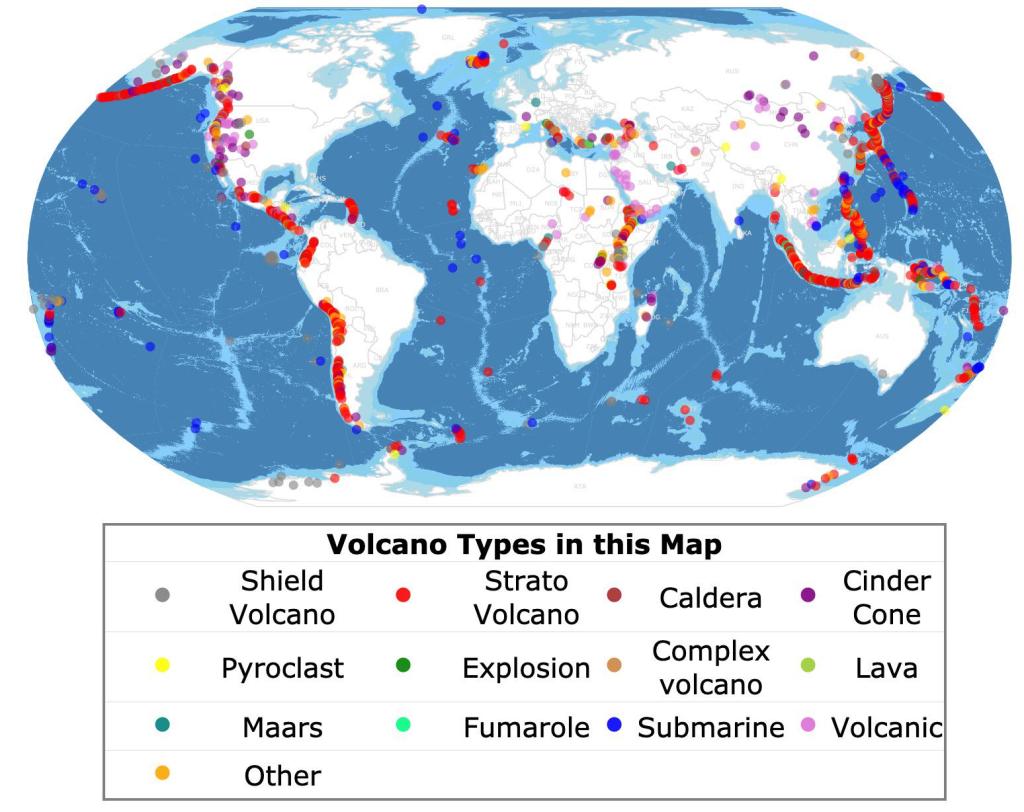A Super Volcano is not like a typical Volcano, Super Volcanoes erupts without any kind of warning and their power can destroy entire civilizations.

Super volcanoes form a exceptionally large magma chambers build up beneath the Earth’s surface. These chambers contain immense volumes of molten rock, far exceeding those found in typical volcanoes. The pressure from these vast magma reservoirs can lead to catastrophic eruptions.
The eruptions of super volcanoes can have far-reaching effects beyond the immediate vicinity. The expulsion of massive amounts of ash and volcanic gases into the atmosphere can lead to a cooling effect on the Earth’s climate. This phenomenon is known as “Volcanic Winter.”
Super volcanic eruptions, some times include seismic and geothermal activity, tsunamis or even the formation of land.
Super volcanic eruptions have occurred throughout Earth’s history. The most known events was the Toba eruption around 74,000 years ago. The Santorini eruption, also known as the Minoan eruption on the Aegean island of Thera (modern-day Santorini), the eruption was a massive explosive event, the explosion caused the collapse of the volcanic caldera, forming the crescent-shaped islands that make up Santorini today.
The eruption produced vast amounts of volcanic ash that blanketed the region, impacting not only Europe but the whole planet because of the Volcanic Winter that followed the eruption.
The super volcano located in Santa Anna, Mexico, erupted in 535 CE. The eruption lead to the “Plague of Justinian” Ilamatepec’s volcanic eruption, caused volcanic winter and created seismic activity that awaken other volcanos like Krakatoa in Indonesia, Rabaul in Papua New Guinea, and volcanoes in Central America and Antarctica.
This impact on the global climate resulted in a long volcanic winter. This period of altered climate conditions contributed to crop failures, famine, and societal upheaval. The changes in environmental conditions facilitated the spread of diseases, creating the outbreak of the Plague of Justinian, a pandemic that affected Europe during the 6th and 7th century.
Super Volcanoes are rare to erupt but when they do they threat the entire world, a recent example of this is the eruption of the super volcano of Eyjafjallajökull. The eruption occurred in April 2010 in Iceland, causing widespread disruption to air travel across Europe due to the release of volcanic ash into the atmosphere.
The volcanic ash cloud from Eyjafjallajökull posed a significant threat to modern civilization. The fine particles of ash can damage aircraft engines, posing serious safety concerns. As a precautionary measure, European and USA authorities decided to close airspace, leading to widespread disruption of air travel.
The closure of airspace had substantial economic ramifications. Airlines faced massive financial losses due to canceled flights and stranded passengers. The disruption also impacted global supply chains, highlighting the interconnectedness of the modern world and the vulnerability of international transportation systems to natural disasters.
The Eyjafjallajökull eruption underscored the need for international cooperation in managing the impact of volcanic events on air travel. It prompted the development and improvement of volcanic ash monitoring and forecasting systems to enhance aviation safety during volcanic eruptions.
Scientists highlighted the need for contingency plans and improved communication channels to mitigate the effects of Super volcanic eruptions.
The eruption of Eyjafjallajökull was stopped without much damage, its eruption demonstrated the power of nature and reminded the colossal potential for destruction, to our civilization who ignores scientific study and destroying nature every day.
what will happen if the Super Volcano in Yellowstone decide to erupt ? is humanity prepared for the eruption of the largest and most powerful volcano on the planet ?
Volcanos map :

Discover more from Multipolar World
Subscribe to get the latest posts to your email.

